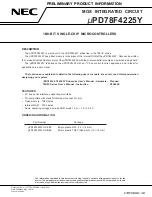
20 Gear Drive, Plymouth Ind. Park, Terryville, CT 06786
Tel: (860) 585-1254 Fax: (860) 584-1973 http://www.amci.com
GENERAL INSTALLATION GUIDELINES
3
29
Avoiding Grounding Problems (continued)
Grounding problems occur when the grounding system carries currents during normal operation or when it
cannot shunt high frequency electrical currents to earth.
AMCI generally encounters three types of grounding problems in systems that use AMCI equipment.
`
Ground Loops:
A ground loop occurs when AC or DC return currents can travel through the system
ground path in addition to their normal return path. This can cause damaging currents to electronics that
share the power supply.
Ground loops in AC systems can occur when the neutral conductor is bonded to the Grounding Electrode
System in more than one place. Under the right conditions, AC line currents may end up flowing
through the protective ground system, which may include exposed metal surfaces and therefore represent
a touch shock hazard. Designing an effective ground fault detection system is well beyond the scope of
this manual. Please refer to the NEC and other design guidelines for your area.
`
Ground Shift:
Remote machines or monitoring stations will usually be connected to a different point
on the Grounding Electrode System than a local system. A voltage potential can exist between these sta-
tions due to resistance between the grounding electrodes and earth. A similar problem exists on
machines that are not properly bonded together. The resistance of a poor bond in the system will result
in a voltage potential across the connection when current is forced through it. Incorrectly installed sen-
sor or communications cables that run between these systems can be damaged by these Ground Shift
potentials.
`
High Impedance Grounds:
The grounding system shows a high impedance to high frequency noise
currents and these signals are not properly shunted to earth. The high impedance to high frequency noise
is caused by capacitance and inductance in the system. Use #8 AWG stranded wire or 1” wire braid for
all ground connections and keep connections as short as possible to minimize capacitance and induc-
tance in the grounding system.
Surge (EMI) Suppression
Incoming Power
In many systems, three phase power is brought to the machine and the control system is powered from one of
these phases. In these cases, good quality, clean AC power can only be achieved by properly conditioning the
three phase power, not just the single phase used by the control system. This is generally achieved by placing
surge suppressors across each phase where the three phase enters the system and at all inductive loads that are
on the three phase branch. This includes inductive loads on any other machine that may be powered by the
same feeder circuit.
Figure 3.2 Surge Suppression on Power Inputs
L1
1FU
L2
2FU
L3
3FU
Suppressor
Suppressor
Su
pp
re
s
s
o
r
L1
L2
L3
H1
H4
H2
H3
X1
X2
Step Down
Transformer
Fuse
GROUND BUS
To Control System
















































